A busy year ahead for RZSS conservation programmes
14/01/2017 in Conservation
2017 is a big year for conservation work at RZSS, with a lot of milestones aiming to be reached! A few to look out for include our work with the Scottish wildcat, Scottish beavers, the giant armadillo, native amphibians and the pine hoverfly.
As part of the Scottish Wildcat Action partnership, RZSS are committed to saving the Scottish wildcat. Hybridisation with feral cats remain the biggest threat to the species, and one of the modern ways to preserve the genetic purity of the wildcat is to collect semen from known male wildcats left in the wild. This technique has been done for the conservation of other cat species but is a new concept for the Scottish wildcat.
This will mean that wildcats will remain within the priority areas but their genes can still be passed on to wildcats in captivity as part of the breeding for release programme. Using the latest video monitoring technology, we will monitor humane traps set to catch wildcats every four hours. When a wildcat is caught, a vet will sedate the animal and carry out the 30-minute procedure before releasing it again.
RZSS, with support from our colleagues in the Priority Areas, will begin this work in February, with the hope of creating a bank of preserved semen for future conservation breeding efforts over the coming years.
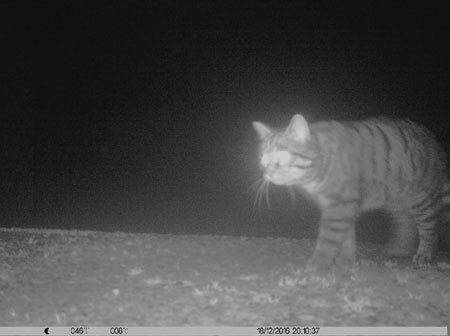
Wildcat recently shown up during RZSS camera trapping
Following the success of the Scottish Beaver Trial – and with the decision made to recognise the beaver as a native mammal – work can begin on how to ensure the population in Knapdale is healthy and self-sustaining. Together with our partners the Scottish Wildlife Trust, it is the Society’s belief that Knapdale should be reinforced with further individuals to boost genetic diversity and supplement the beavers currently living there. This next phase of the project will be called ‘Scottish Beavers’ – keep an eye out for updates via the RZSS social media outlets.
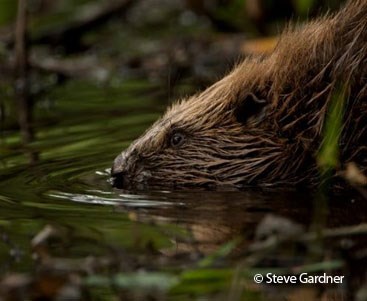
Beaver entering Loch in Knapdale by Steve Gardner
Also one to look out for in 2017 is ‘Hotel Armadillo’, a one-hour BBC documentary voiced by Sir David Attenborough all about the giant armadillo. The programme was made by independent production company Maramedia (who previously produced Hebrides and Highlands) and will be broadcast later this year. The documentary follows Arnaud and his team around the Pantanal showcasing the work RZSS supports over there – one not to be missed!
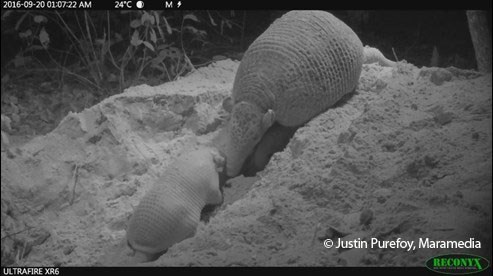
Armadillo mother and baby by Justin Purefoy, Maramedia
A recent survey has shown that nearly one-third (32%) of the world’s amphibians are threatened; in fact, it is often classed as a modern-day mass extinction. This year will see the Society begin work conserving a number of native amphibians. There are six native, land-living amphibian species in Scotland, plus a few non-natives that have established through accidental or illegal releases. Among the most at risk native species are the natterjack toad and the crested newt, both of which we have plans for over the year ahead. More to follow on this very soon…
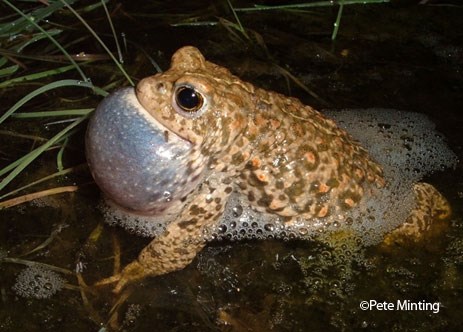
Male Natterjack calling by ©Pete Minting
And finally, the pine hoverfly larvae sent over to RZSS Edinburgh Zoo from Nordens Ark, Sweden last year have settled in and are being looked after by our Presentations team. It is hoped that the larvae will pupate this season, although they have been known to remain as larvae for two seasons. This work is vital to understand more about this endangered species and how it can be restored across much of its former range, with the Society aiming to play a lead role in saving the pine hoverfly from extinction.
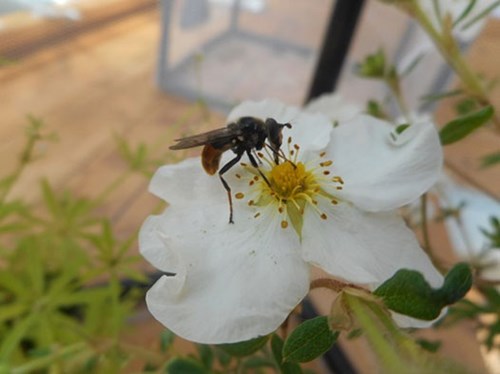
Pine hoverfly at Edinburgh Zoo
These are just a few of the highlights we anticipate in 2017, so a busy year ahead but we can’t wait to get started!

Ben Harrower
RZSS Conservation Programme Manager
Featured Articles

An update from the Budongo Forest
19/04/2024 in Conservation

Edinburgh Zoo named best zoo in Scotland
15/04/2024 in Edinburgh Zoo

























Follow EZ